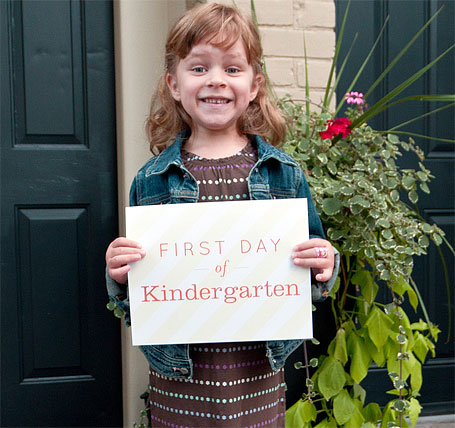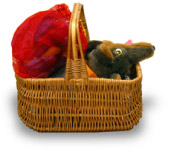
“Bye Dad, see you later.” The first day your child goes to kindergarten can be both exciting and anxiety-filled, for you, as well as for your child. Knowing what your child will be doing in kindergarten and preparing him for this big step will ease the transition and focus his attention on the positive.
In Kindergarten, your child will:
- make choices (e.g., choosing activities and materials to use)
- share activities and space with other children
- be asked to dress independently
- be exposed to new people, routines and activities
- have calendar/circle time with the group when he will be asked to sit on the floor and listen to the teacher
- tell other children and adults what he wants or needs
- use materials for writing (e.g., crayons, markers) and see other children and adults, write too
- learn about the world around him
- learn about colours, shapes, patterns, sorting, numbers, and letters
- have opportunities to create pictures, structures, music, and songs
- use different equipment to develop large and small muscles
Now that you know a bit about what your child will be learning and what may be expected of him, you can help prepare him for kindergarten by doing some of the following activities at home:
- Give your child choices (e.g., foods to eat, clothes to wear, activities to do). You can use actual objects, or a visual choice board to help your child make choices.
- Set up times for your child to be with other children and try to encourage turn-taking with different activities or games.
- Help your child learn to wait. Count out loud or use your fingers to help your child understand how long he has to wait. If your child can count, encourage him to join in. For example, “One…two…three… It’s Adam’s turn!” Fidget toys can be used to help a child during waiting times. Your child can play with a small toy figurine, or piece of clay while waiting for his turn – this is a great way to keep him busy. If your child uses fidget toys at home or in the community, be sure to let his teacher know the information when he starts school.

- Help your child learn to sit on the floor for short periods of time to get ready for calendar and circle time. Sit on the floor with your child and sing songs using props, such as a stuffed animal, or read a book. You can also take your child to an Ontario Early Years Centre, or the library for song/story circles to prepare him for this experience.
- Practise self-help skills with your child such as dressing (e.g., putting on coats, snow pants, boots), cleaning up after snack time, hand washing and toileting routines.
- Encourage your child to communicate his wants and needs, such as asking for help, asking for an activity, or going to the washroom. Your child may use words, sign language or picture symbols.
- Practice preprinting activities with your child, such as beading (on a straw, pipe cleaner, or string), peg boards and lacing activities.
- Read books to your child, talk about pictures, words, and letters.
- Talk to your child about seasons, weather, growth and things he sees outdoors when on a walk or trip.
- Do sorting activities with your child, such as sorting objects or clothing by colour and shape.
- Talk about colours, shapes, numbers, letters in your child’s life (e.g., “See the red car “, ”The cookie is a circle shape”, ”You have 2 beads”).
- Build with your child using a variety of materials such Lego, wooden blocks, tinker toys, or items found around your home like plastic cups or empty cereal boxes.
- Help your child build large muscle coordination by rolling, throwing, and kicking a ball. You can also take your child to the playground for exercise and sing active songs such as “Hokey Pokey” or “Shake Your Sillies Out”.
As a parent, you are your child’s most important teacher. By preparing your child for kindergarten and continuing to work on these skills can help make his experience at school more successful.
Sources
This information has been adapted from the Toronto District School Board and the Toronto Catholic District School Board “Getting ready for Kindergarten” pamphlet.
